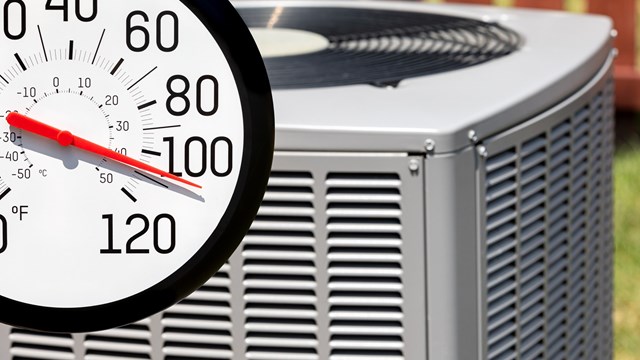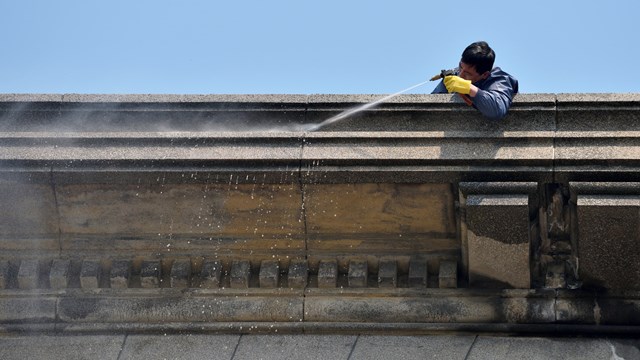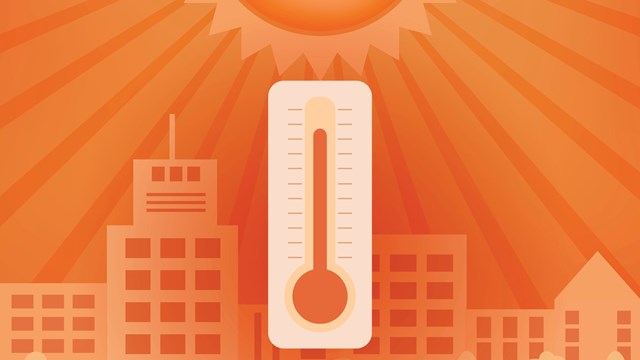
In a multifamily building with scores, possibly hundreds of people living under one roof, cooking, cleaning, dusting and breathing, it’s no surprise that the airways, chutes and garbage rooms of these buildings can get clogged and dirty over time. Waste material, debris, and allergens can build up in a building’s airways and passages, causing everything from noxious smells to pest issues to bona fide health problems for residents. Air conditioning, climate control and proper handling of waste play a huge role in maintaining not only quality of life, but health as well.
Maintenance and Upkeep
How often should a Chicago residential building have its garbage chutes cleaned? That depends on who lives in the building and how big it is, says Donald Weckel, a controller with Nu-Recycling Technology in Naperville.
“It also depends on the amount of usage,” he says. “We have an automatic system in a couple hundred buildings throughout the city that cleans their chutes once a week. The system uses a microorganism that eats trash off the walls. It’s dispersed at the top of the chute, and the air activates the organisms. Once the food source is gone, they’ll eat each other and fall into the chute and die. It’s on a timer and runs automatically, usually late Sunday night/early Monday morning. The solution is biodegradable and it won’t hurt anybody, but we still don’t want anybody using the chute during that time because no one wants to stick their hand in and get wet. We go in every seven weeks to fill up the solution.”
Weckel also notes that lots of buildings like to power wash garbage chutes but finds that method to be ineffective because the next day the chute is not clean anymore.
Donald Weekes, CHI, CSP, and president of The Indoor Air Quality Association (IAQA) in Ottawa, Ontario says that ventilation systems in multifamily buildings should be cleaned on a building by building basis.
“For example if you have a building in downtown Chicago, it's subject to a variety of different types of pollutants; everything from construction dust to traffic fumes. So you may want to clean your ducts more often than if you are on a farm in Vermont,” says Weekes. “You make sure to gear the frequency of cleanings based on the amount of pollutants you have coming into your ventilation system.”
Immediate effects of indoor air pollutants may show up after one exposure or repeated exposures. These include irritation of the eyes, nose and throat, headaches, dizziness and fatigue. Most immediate effects are short-term and treatable. Oftentimes treatment is simply eliminating the person’s exposure to the source of the pollution if it can be identified. Symptoms of diseases such as asthma, hypersensitivity, pneumonitis and humidifier fever may also show up soon after exposure to some indoor air pollutants.
Common Causes
According to the U.S. Environmental Protection Agency (EPA) there are numerous sources of indoor air pollution in any home. Oil, gas, kerosene, coal, wood, tobacco, and building materials and furnishings as diverse as wet or damp carpet, pressed wood products and household cleaning supplies are among common pollutant sources found inside the home.
“Believe it or not, human skin is a big contributor to dirty duct work and clogged systems,” says Edward Higgins, president of Emerald Heating and Air Conditioning in Burbank. “They say that 80 percent of household dust is made up of human skin particles—so the dust we find in the ducts is actually a bunch of dead skin cells. A home or building with an up-to-date furnace system that allows more fresh air in will cut down on that accumulation, keeping the ducts cleaner and requiring less maintenance. Ultra Violet (UV) lighting actually kills mold and many other particles, so that’s something to consider as well.”
But the problems afflicting garbage chutes aren't always as gross as a bunch of shed skin cells, adds Weckel. “The number one reason for garbage chutes getting clogged is cardboard,” he says. “Tenants should never throw cardboard down a chute, but they do. Especially pizza boxes, most people fold them up before putting them in the chute, but then they pop open, create a clog and potentially back up your chute. We recommend that pizza boxes shouldn’t even go in trash bags. Even when you throw a trash bag out if it’s sticking out it may clog the chute. In the buildings that we’re in we try to get them to post ‘no cardboard’ signs near the chutes.”
On average, cleaning a garbage chute costs around $100 a month for a 30-story building in the Chicago area, but several variables affect the price. “For the bigger buildings, over 30 floors, it’s $200 a month because we are going to use more solution,” says Weckel. “We use a 35-gallon tank for anything under 30 stories, and a 70-gallon tank for anything above 30 stories.”
How They Do It
Air duct cleaning removes dust, dust mites and other contaminants from the air duct system and prevents them from being circulated continuously. Ducts have also shown to be an ideal place for spores and other micro fungus to develop and grow. Due to the dark nature of the duct and the available nutrients from outside pollutants the duct can become a breeding ground. In addition, various studies have shown that air duct cleaning can preserve a heating and cooling system. Therefore air duct cleaning is not only cost efficient but mandatory for the health of a building.
“A reputable duct cleaning company will perform the inspection by going in with a camera,” explains Higgins. “They will go through each individual duct and actually show the customer what’s down inside there. A lot of places like to show you just a little bit of the vent. You want to at least go in through the main trunk line, and you want a camera that’s going to have at least a 20 to 30 foot length to it. That way you get in and see all of the duct work instead of just the first foot. You want to be able to see the stuff you can’t see yourself, or things that can’t be seen with the naked eye. Once this process it done, it should be repeated every five years.”
A comprehensive preventative maintenance program can prevent the need for repeated duct cleaning and unnecessary repair costs.
“If you don’t have electronic air filters the big thing to do is to change your filter once a month,” says Higgins. “A lot of people don’t even realize they have filters in their furnaces, but they do and they need to be changed once a month. A lot of places like home improvement stores are big on selling allergenic filters which in fact do a lot of damage to furnaces because they stop air flow. We tell all of our customers to go with a 30 day filter change and change it once a month religiously. That is the best preventative maintenance you can do.”
At the end of the day, when it comes to providing a healthy indoor environment, the proper monitoring, maintenance, repair and education are imperative. Once that is done, the only thing left to do is to breathe easy.
George Leposky is a freelance writer and a frequent contributor to The Chicagoland Cooperator.






Leave a Comment